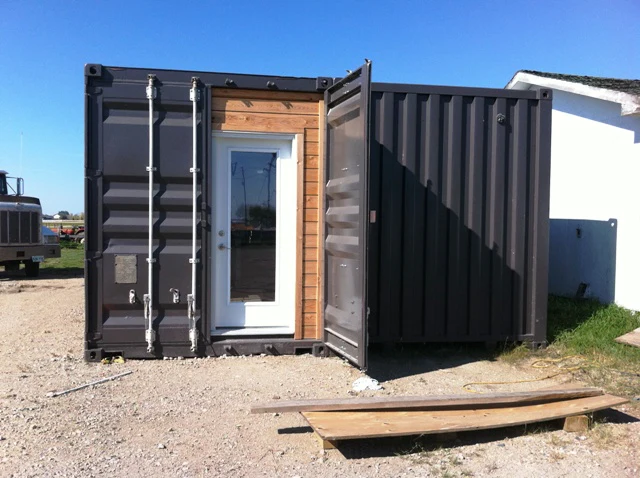Uncategorized
BUY SHIPPING CONTAINER CABIN

SHIPPING CONTAINER CABIN
If you’re interested in buying a shipping container cabin, there are a few options you can explore:
- Container Cabin Builders: Some companies specialize in converting shipping containers into livable cabins. They offer pre-designed or custom-built container cabins based on your specifications. You can search online for container cabin builders and contact them directly to inquire about their products and services.
- Online Marketplaces: Online marketplaces that cater to shipping containers, such as specialized container sales websites or general e-commerce platforms, may have container cabins available for purchase. These platforms allow you to browse listings, compare prices, and contact sellers to discuss the details of the container cabin you’re interested in.
- Local Suppliers: Check for local suppliers or dealers of shipping containers in your area. While they may primarily focus on selling shipping containers for storage or transportation purposes, they might also have information or connections related to container cabins or be able to refer you to relevant resources.
When purchasing a shipping container cabin, it’s important to consider factors such as the size, layout, insulation, plumbing, and electrical requirements to ensure it meets your needs and local building codes. Additionally, budget for delivery or transportation costs if the cabin needs to be shipped to your location.
Remember to conduct thorough research, ask for references or examples of previous work, and consider customer reviews or testimonials before making a purchase. It’s also advisable to consult with professionals, such as architects or engineers, to ensure the structural integrity and safety of the container cabin.
What are some common challenges or considerations when it comes to insulating a shipping container cabin?
Insulating a shipping container cabin poses specific challenges due to the nature of the container’s construction. Here are some common challenges and considerations to keep in mind:
- Condensation: Shipping containers are made of steel, which conducts heat and cold easily. This can lead to condensation buildup inside the container, especially in humid environments. Proper insulation is essential to prevent condensation, as it can lead to mold, mildew, and damage to the interior. Consider using insulation materials with vapor barriers to mitigate condensation.
- Space Limitations: Shipping containers have standard dimensions, typically 8 feet wide, 8.5 feet tall, and in lengths of 20 or 40 feet. Insulation should be chosen carefully to minimize the impact on interior space. Thin insulation options like spray foam or rigid foam boards can be effective while minimizing space loss.
- Structural Integrity: Insulation should not compromise the structural integrity of the container. Avoid adding excessive weight or altering the structural components, such as the container’s corrugated walls or roof. Consult with professionals experienced in container conversions to ensure insulation methods are compatible with the structural design.
- Fire Safety: Consider the fire safety aspects of the insulation materials chosen. Some insulation materials, like spray foam, may require additional fireproofing measures to meet safety regulations. Ensure compliance with local building codes and regulations.
- Moisture Management: In addition to condensation, moisture infiltration from the exterior can be a concern. Insulation materials should be resistant to moisture and should not retain water. Proper sealing and moisture barriers should be employed to prevent moisture ingress.
SHIPPING CONTAINERS FOR SALE
- Insulation Types: There are various insulation options available for container cabins. Common choices include spray foam insulation, rigid foam boards, mineral wool, and reflective insulation. Each has its pros and cons in terms of cost, effectiveness, ease of installation, and space requirements. Consider factors such as climate, budget, and desired R-value (insulation effectiveness) when selecting an insulation type.
- Ventilation: Proper ventilation is essential to maintain air quality and prevent moisture buildup. Incorporate ventilation systems, such as windows, vents, or mechanical ventilation, into the design to ensure adequate airflow.
- Energy Efficiency: Insulating a container cabin can significantly improve energy efficiency. Consider high-quality insulation materials with good thermal resistance (R-value) to reduce heating and cooling needs. This can lead to energy savings and increased comfort.
It is advisable to consult with professionals experienced in container conversions or insulation specialists to assess your specific needs and determine the most suitable insulation methods for your shipping container cabin.

